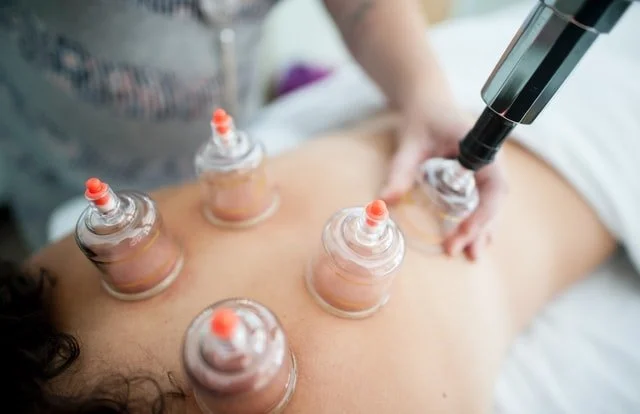Cupping Therapy: Is it Right for Me?
The 2022 Winter Olympic Games are here, and with them come all kinds of discussions about athletes’ unusual training habits. Olympic skiers eat 8,000 calories each day. Figure skaters train at least four hours a day, six days a week.
But perhaps the most interesting practice we see each Olympics (summer and winter) is cupping, the therapy that athletes like Shaun White, Lindsey Vonn, and Sidney Chu credit for their recovery.
Earlier this month, Chu – a speedskater from Hong Kong – claimed that cupping promoted overall wellness. But what exactly is this treatment, and how can it help improve your health? Let’s take a closer look at cupping therapy.
Cupping therapy
What is Cupping?
Cupping therapy is a holistic wellness practice that involves applying suction to a specific area, usually on the back.
In a cupping session, a practitioner typically lights a flame into a glass cup to remove any oxygen, and then applies the cup to the skin to create negative pressure. The cup then creates suction, which draws fluids and toxins from the body (in another form of cupping, called “wet cupping,” the practitioner also pierces the skin to draw blood.).
Where Does it Come From?
Cupping has its origins in Chinese, Egyptian, and Middle Eastern traditional medicine. In fact, the practice is also known as Hijama, or “sucking” in Arabic. Ancient cultures practiced cupping for centuries, before it fell out of favor around the 17th and 18th centuries – until modern wellness experts brough it back.
Does Cupping Therapy Work?
Athletes like Michael Phelps, Shaun White, and Sidney Chu swear by cupping – but does it actually work? Maybe. Research suggests that cupping may offer some relief for neck and back pain, but the evidence is limited to support that claim.
Cupping therapy session
However, one thing we CAN say for sure is that cupping isn’t for everyone. If you have eczema or psoriasis, it’s best to avoid cupping as the suction could irritate your skin. It’s also important to ensure all materials are sterilized between sessions to avoid spreading any bloodborne diseases during wet cupping (when blood intentionally enters the cups) and dry cupping (when blood vessels might burst and unintentionally).
If you’re struggling with neck or back pain, or even if you want to try some Olympic-level post-workout recovery, cupping is an option you might enjoy. Just make sure to be safe, use a reputable practitioner, and monitor your body’s response.
At The Blissful Heart Wellness Center in Bend, we have practitioners versed in a variety of holistic treatments including cupping. If cupping isn’t—well—your cup of tea, a therapeutic massage may be right for you or perhaps a blend of yoga and massage during our Yomassage classes.
Be sure to follow us on social media and subscribe to our emails for the latest wellness classes and events in Bend!


